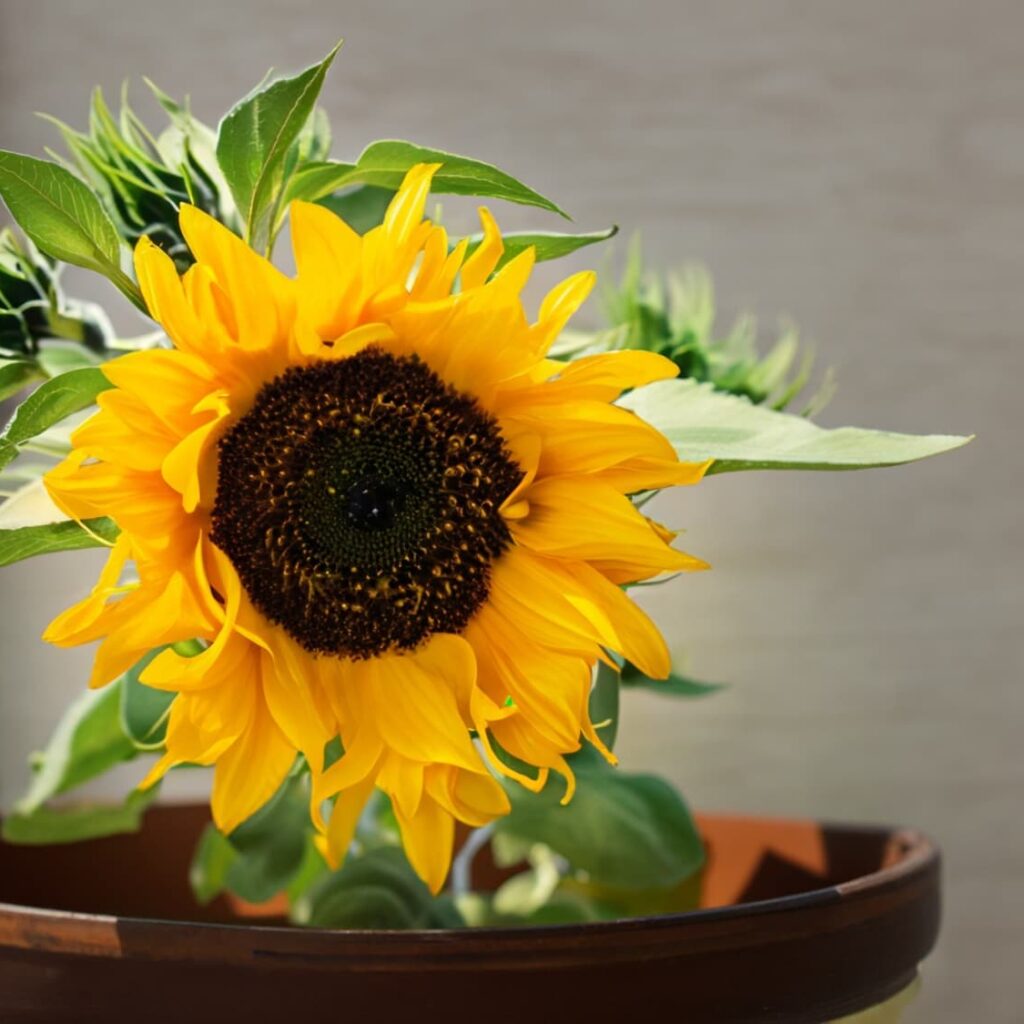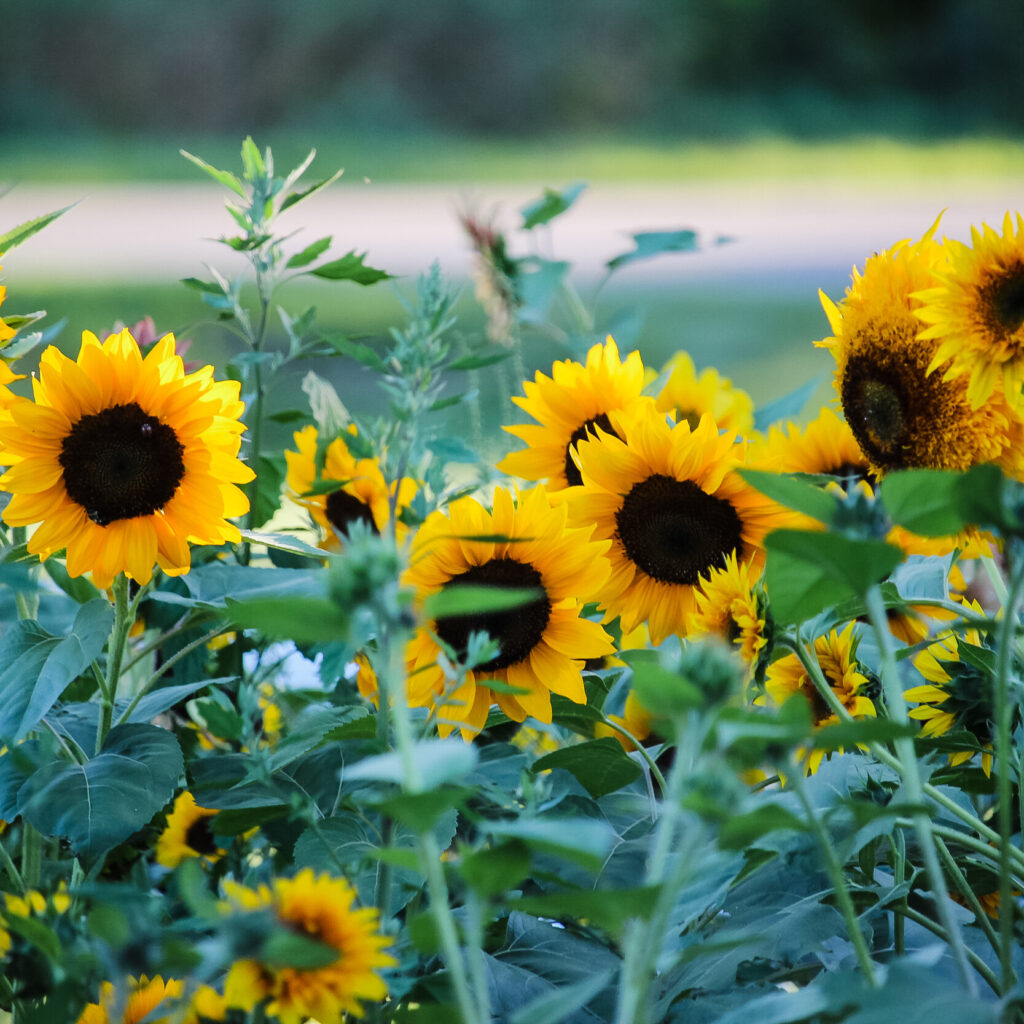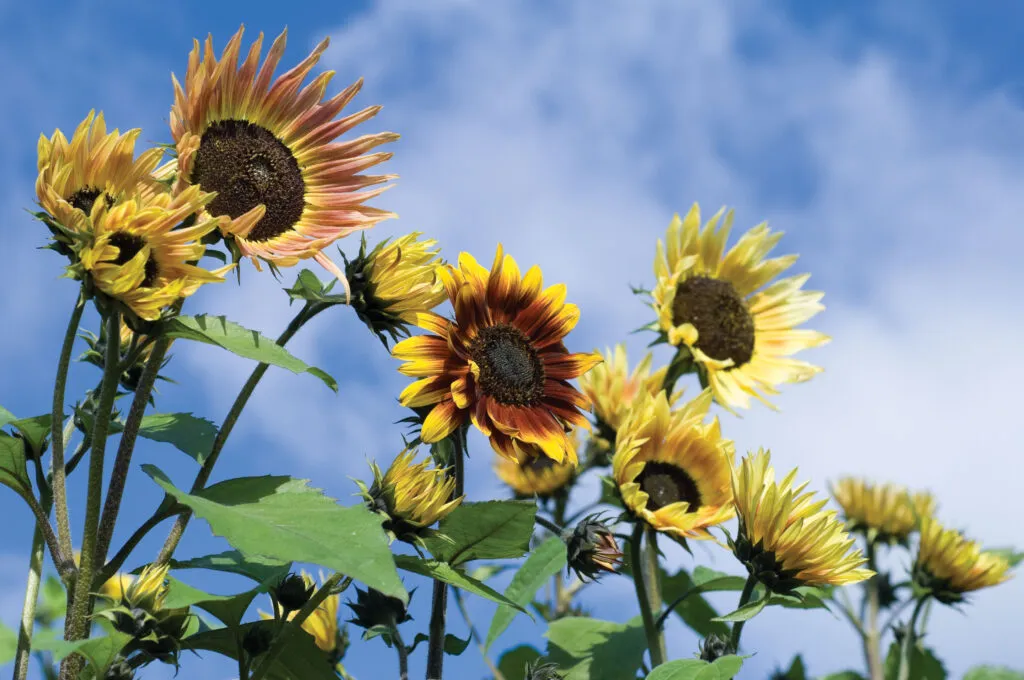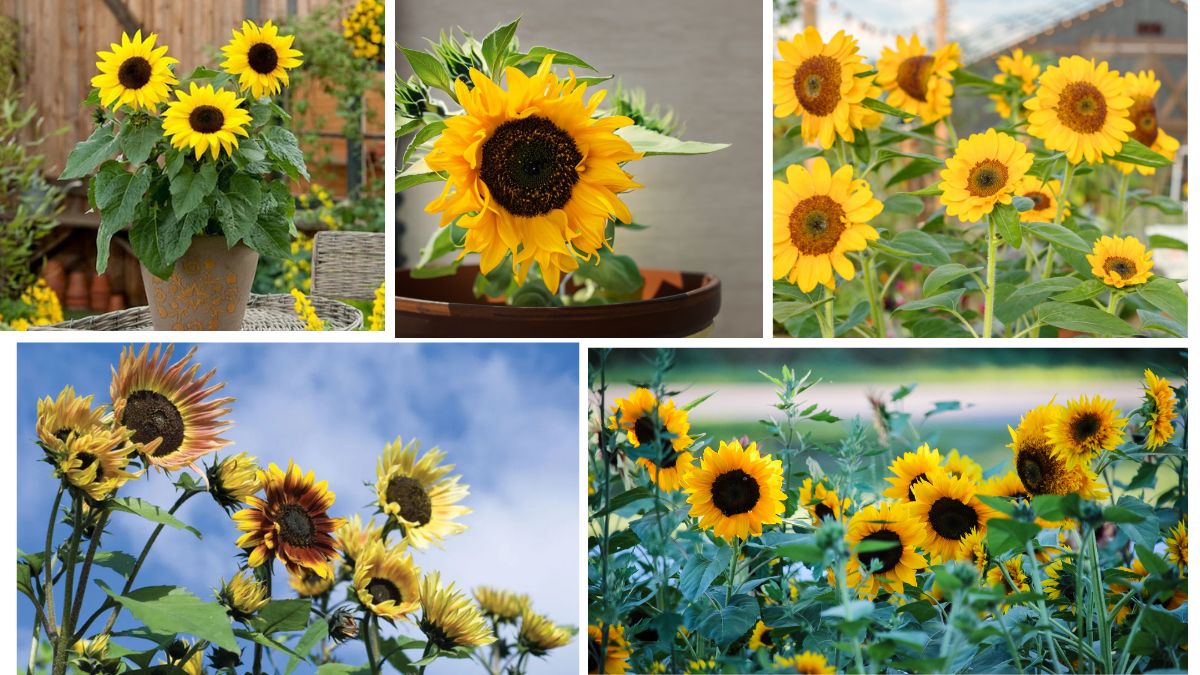Sunflowers (Helianthus annuus) are one of the most iconic and cheerful flowers in any garden. Known for their towering height, golden-yellow petals, and sun-tracking nature, these bold blooms are easy to grow and immensely rewarding. Whether you’re planting them for beauty, pollinators, seeds, or even to boost your garden’s personality, sunflowers are a must-have. In this comprehensive guide, we’ll explore bold and bright tips to help you grow sunflowers successfully in your home garden.
Why Choose Sunflowers?

Sunflowers are more than just pretty faces. They are:
- Fast-growing and easy to maintain.
- Heat and drought tolerant, making them perfect for sunny climates.
- Excellent for pollinators, attracting bees and butterflies.
- Great for cut flower arrangements or seed harvesting.
There are also a variety of sunflower types—giant, dwarf, branching, pollenless, colored varieties (orange, red, bronze), and multi-headed cultivars—offering something for every gardener.
1. Select the Right Variety
Choosing the right sunflower variety is the first and most important step. Consider your space and purpose:
- Giant Varieties: ‘Mammoth Russian’, ‘Titan’, and ‘American Giant’ grow up to 12–15 feet tall.
- Dwarf Varieties: Ideal for containers or borders, such as ‘Teddy Bear’ or ‘Sunspot’.
- Branching Varieties: Produce multiple blooms, e.g., ‘Autumn Beauty’ or ‘Sunrich Orange’.
- Pollenless Varieties: Great for indoor arrangements.
Pro Tip: For a garden bursting with texture and color, mix tall and dwarf varieties together.
2. Choose a Sunny Spot

As their name suggests, sunflowers love the sun. To thrive:
- Select a location that gets 6–8 hours of full sun daily.
- Avoid shade from trees, fences, or nearby buildings.
- Ensure good air circulation to prevent mildew or mold.
Sunflowers are phototropic—they follow the sun (heliotropism) during their growth phase. Positioning them in open, unobstructed areas allows them to make the most of this natural behavior.
3. Prepare the Soil Right
Sunflowers are not picky, but they do best in well-prepared soil:
- Soil Type: Loose, well-draining, loamy soil.
- pH Range: 6.0 to 7.5 is ideal.
- Nutrients: Enrich soil with compost or aged manure for added nitrogen and potassium.
Avoid too much nitrogen—it encourages leafy growth at the expense of flowers.
Before planting, till the soil to a depth of at least 2 feet to accommodate their deep taproots. Break up any hard clumps and remove weeds.
4. Planting Tips for Success

When to Plant:
- In most regions, plant sunflowers in spring, after the last frost.
- Soil temperature should be at least 55–60°F (13–16°C).
How to Plant:
- Sow seeds directly in the ground.
- Plant seeds 1 to 1.5 inches deep, spaced 6 inches apart.
- For giant varieties, space 12–24 inches apart to avoid overcrowding.
Water thoroughly after planting and keep soil moist (but not waterlogged) until germination, which takes 7–10 days.
Tip: Stagger your planting every 2 weeks for continuous blooms all summer long.
5. Watering and Feeding

Sunflowers are relatively drought-tolerant once established, but they still need care:
Watering:
- Water deeply once or twice a week.
- Focus on deep root watering rather than surface sprays.
- Avoid overhead watering to prevent fungal issues.
Feeding:
- Use a balanced fertilizer (10-10-10) once plants are 1–2 feet tall.
- Avoid high-nitrogen feeds late in the season to encourage flowering.
Don’t let sunflowers dry out during budding and flowering—it will reduce bloom size and seed production.
6. Support Tall Varieties
Giant sunflowers can grow more than 10 feet tall and need help to stand upright:
- Use wooden stakes or bamboo poles tied with soft string or garden ties.
- Plant against a fence or along a wall for natural wind protection.
- Earth-up the base of the stem to add stability.
Supporting them early prevents snapping from wind or heavy heads.
7. Pests and Problems

Sunflowers are generally low-maintenance, but some common problems to watch for include:
Pests:
- Aphids: Spray with neem oil or introduce ladybugs.
- Cutworms: Protect seedlings with cardboard collars.
- Birds & Squirrels: Use netting or garden scare tape during seed development.
Diseases:
- Powdery Mildew and Rust: Prevent with proper spacing and avoid wetting leaves.
- Downy Mildew: Improve drainage and reduce watering frequency.
Rotate crops yearly to avoid soil-borne diseases and pests.
8. Harvesting Tips
Sunflowers offer multiple harvest opportunities:
For Cut Flowers:
- Cut just as petals are starting to open.
- Use a sharp knife and place in water immediately.
For Seeds:
- Wait until the flower head droops and the back turns yellow or brown.
- Rub seeds out by hand or brush.
- Dry seeds in a single layer in a well-ventilated area for 2–3 days.
Store sunflower seeds in an airtight container or roast them for a healthy snack!
9. Creative Uses for Sunflowers
Sunflowers can serve many purposes beyond beauty:
- Seed Production: Grow edible seeds or save for next season’s planting.
- Pollinator Magnet: Great for bees, butterflies, and birds.
- Natural Privacy Screen: Tall sunflowers make a great seasonal living wall.
- Companion Planting: Good with cucumbers and squash; avoid planting near potatoes.
They also make amazing additions to floral arrangements, wreaths, or pressed flower crafts.
10. Fun Sunflower Facts
- Sunflowers are native to North America, used by Native Americans for oil, dye, and food.
- The largest sunflower ever recorded reached 30 feet tall!
- A single sunflower head can hold 1,000 to 2,000 seeds.
- Van Gogh’s “Sunflowers” series made these blooms world-famous in art.
Final Thoughts
Growing sunflowers is a bold and bright adventure every gardener should try. With their vibrant petals, towering presence, and cheerful demeanor, sunflowers bring joy to any garden space. From tiny pots to open fields, sunflowers can adapt and thrive with the right care. Follow these practical tips, and you’ll enjoy a season full of golden blooms, happy pollinators, and maybe even your own stash of tasty seeds.
Whether you’re a beginner or a seasoned gardener, sunflowers are an easy way to brighten up your garden and your mood.



